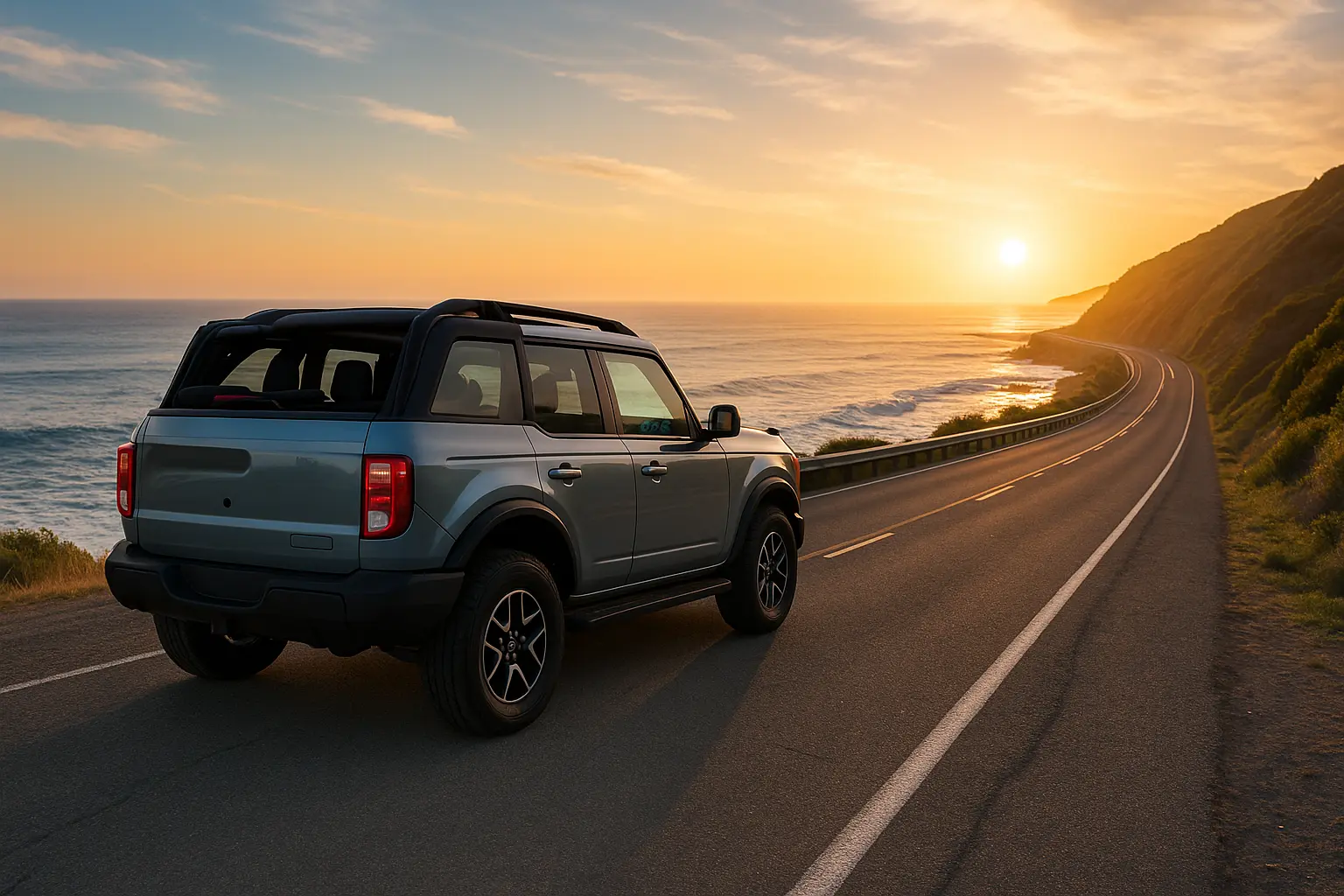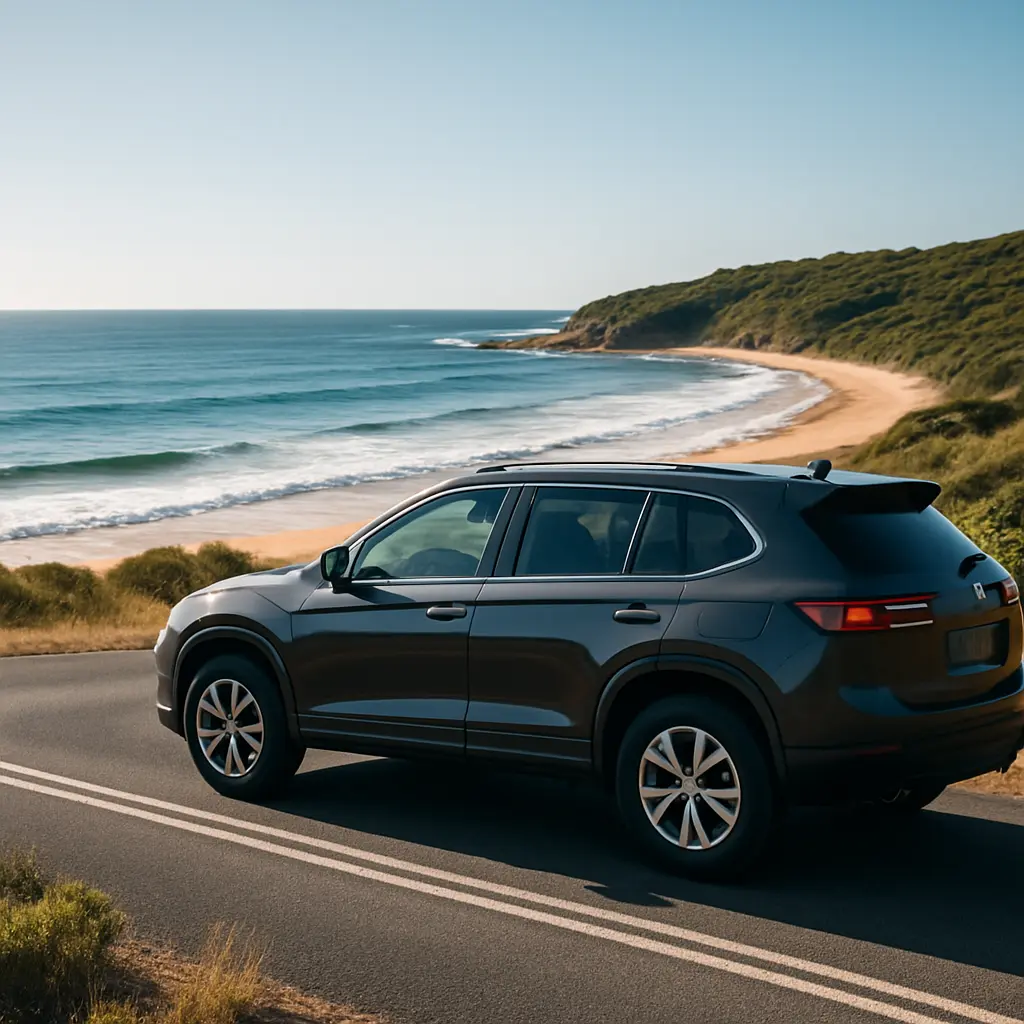A coastal road trip in Australia is more than just a drive — it’s an experience of salt-sprayed air, open horizons, and winding routes that hug the shoreline. But whether you’re cruising the Great Ocean Road in Victoria, tackling Queensland’s Sunshine Coast, or navigating the rugged Tasmanian coast, your journey’s success depends on one crucial factor: how well-prepared your car is.
In 2025, road trips aren’t just about throwing a bag in the boot and hitting the highway. With increasingly sophisticated car tech, ever-changing road conditions, and Australia’s unpredictable coastal weather, preparation is key. In this guide, we’ll cover everything from mechanical checks and safety gear to coastal driving techniques and modern road trip hacks.

1. Why Coastal Road Trips Need Special Preparation
Driving along the coast presents unique challenges that inland routes don’t.
Some of the biggest factors include:
- Salt Exposure – Coastal air is rich in salt, which can accelerate rust and corrosion.
- Variable Road Surfaces – Expect everything from smooth tarmac to sandy pull-offs and gravel detours.
- Strong Winds – Ocean breezes can be forceful, especially on exposed stretches.
- Changing Weather – Conditions can switch rapidly, from sun to rain and fog.
- Tourist Traffic – Popular coastal roads can be busy, with unpredictable stops and slower drivers.
These elements mean your car must be ready not just mechanically, but also in terms of safety, comfort, and durability.
2. Mechanical Checks Before You Hit the Road
Before setting off, book your car in for a pre-trip inspection — or conduct a thorough DIY check if you’re confident. Here’s what to focus on:
a. Engine & Fluids
- Oil Level & Quality – Check with the dipstick; top up or change if it’s close to the service interval.
- Coolant – Coastal routes can have steep climbs; ensure your cooling system is in top condition.
- Brake Fluid – Low fluid can signal worn brake pads — fix before your trip.
- Windscreen Washer Fluid – Coastal spray and bugs can quickly dirty your windscreen.
b. Tyres
- Tread Depth – Minimum legal depth in Australia is 1.5 mm, but aim for 3 mm for safety.
- Tyre Pressure – Adjust according to manufacturer specs, factoring in heavy luggage.
- Spare Tyre Condition – Check air pressure and tread.
c. Brakes
Listen for squealing or grinding; both indicate wear. In coastal drives, braking distances can change due to moisture and sand.
d. Battery
Modern cars have more electronics than ever. Test your battery to avoid starting issues on remote stretches.
e. Lights
Test all exterior and interior lights — coastal fog or early-morning departures make visibility vital.
3. The Ultimate Coastal Road Trip Car Checklist (Australia 2025)
To keep your trip smooth and stress-free, here’s your must-have gear list:
Essential Tools & Equipment
- Jack, wheel brace, and spare tyre
- Tyre repair kit and portable air compressor
- Jumper leads or a portable jump starter
- Multi-tool and duct tape
- First-aid kit
Comfort & Convenience
- USB chargers and cables
- Sunglasses (polarised for glare)
- Sunshade for parked stops
- Reusable water bottles and snacks
- Car phone mount for navigation
Safety & Navigation
- Paper map backup (mobile coverage can be patchy)
- Torch with extra batteries
- Reflective safety vest
- Warning triangle
Coastal-Specific Gear
- Microfibre cloths for cleaning salt spray off windows
- Rust-prevention spray for exposed metal
- Waterproof bags for electronics
4. Coastal Driving Tips for 2025
Driving along the coast isn’t just about watching the waves — it requires skill and awareness.
a. Manage Salt Exposure
- Rinse your car’s exterior daily if possible, especially under the wheel arches.
- Apply a ceramic coating before the trip to help protect paint.
b. Watch Out for Sand
- Avoid driving directly on soft sand unless your vehicle is equipped (and permitted).
- If sand gets in your brakes, rinse them gently with fresh water.
c. Be Prepared for Crosswinds
- Keep a firm grip on the wheel.
- Reduce speed on exposed roads.
d. Know Your Rest Stops
Coastal routes often have scenic pull-offs; plan them in advance to avoid last-minute swerves.
e. Adjust Speed for Conditions
Wet or sandy roads can reduce grip — slow down in tricky patches.
5. Choosing the Right Car for a Coastal Road Trip
While almost any well-maintained vehicle can handle a coastal trip, certain features make the experience more enjoyable and safer:
- SUVs & Crossovers – Great for versatility and higher ground clearance.
- 4x4s – Ideal for mixed terrain including sand and gravel.
- Convertibles – Perfect for sunny stretches (but watch for sunburn).
- EVs & Hybrids – Quiet, eco-friendly travel; just plan charging stops carefully.
6. Maintenance During the Trip
Don’t think prep ends once you hit the road — ongoing maintenance keeps your trip trouble-free.
- Check tyre pressures every 1,000 km or after rough sections.
- Wipe windows and mirrors daily to remove salt spray.
- Refuel when you hit half a tank — remote stretches may have fewer stations.
- Listen for unusual noises; coastal corrosion can affect brakes and exhausts quickly.
7. Tech & Apps for the 2025 Road Tripper
Modern tech can make coastal driving safer and more enjoyable:
- Offline Maps Apps – Google Maps offline mode, Maps.me.
- Weather Apps – BOM Weather for accurate coastal forecasts.
- Fuel Price Apps – Compare prices along your route.
- Dash Cameras – Record your scenic drive and provide security.
8. Insurance & Roadside Assistance
Even the best-prepared drivers can face unexpected issues.
- Roadside Assistance – Ensure your policy covers remote coastal areas.
- Travel Insurance Add-Ons – Some cover personal belongings in the car.
- Comprehensive Car Insurance – Check for coverage of storm damage and vandalism.
9. Environmental Responsibility on Coastal Routes
Australia’s coasts are home to fragile ecosystems. A responsible road trip includes:
- Sticking to marked roads and car parks.
- Taking rubbish with you.
- Avoiding wildlife feeding.
- Using eco-friendly car wash products.
10. Sample Itinerary – Great Ocean Road (VIC)
If you need inspiration, here’s a 3-day outline for one of Australia’s most famous coastal drives:
Day 1: Melbourne to Apollo Bay
- Stop at Torquay, Bells Beach
- Lunch at Lorne
- Evening in Apollo Bay
Day 2: Apollo Bay to Port Campbell
- Otway National Park
- 12 Apostles at sunset
Day 3: Port Campbell to Warrnambool
- London Bridge
- Beach walks
Conclusion
A coastal road trip in 2025 is one of the most rewarding travel experiences in Australia — but preparation is everything. From protecting your car against salt damage to packing the right gear and using the latest travel apps, every detail contributes to a safer, smoother, and more enjoyable journey.
When your car is ready, you’re free to focus on the most important part — soaking up Australia’s stunning coastal scenery and making memories that last a lifetime.
Leave a comment
Your email address will not be published. Required fields are marked *




















